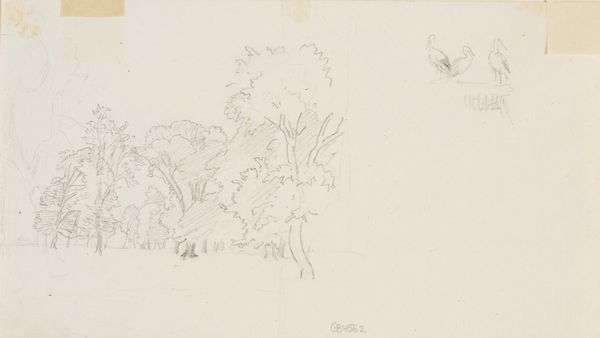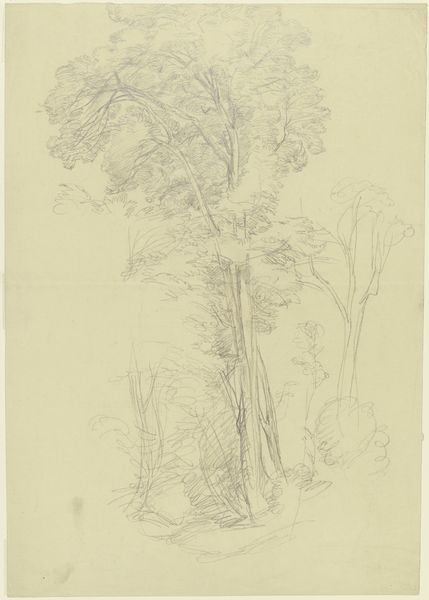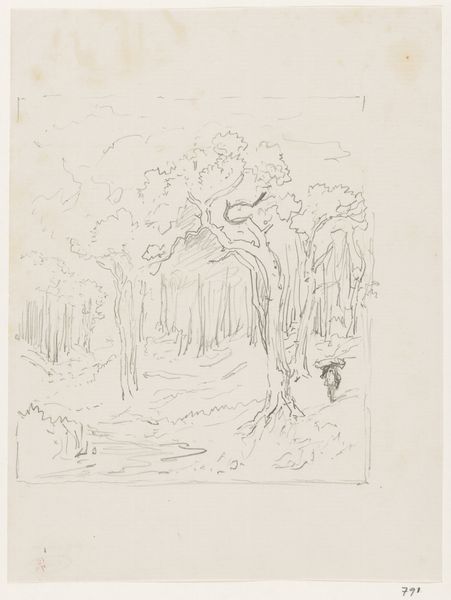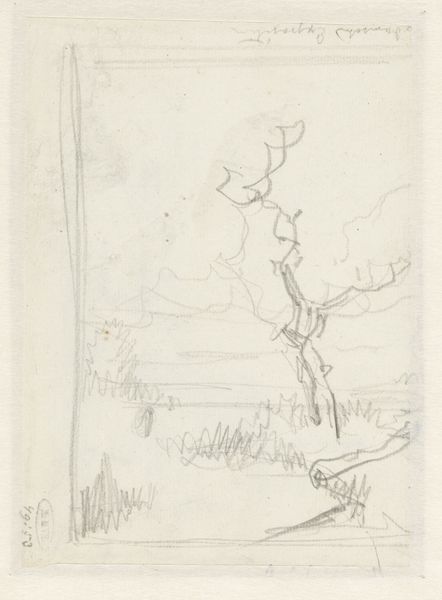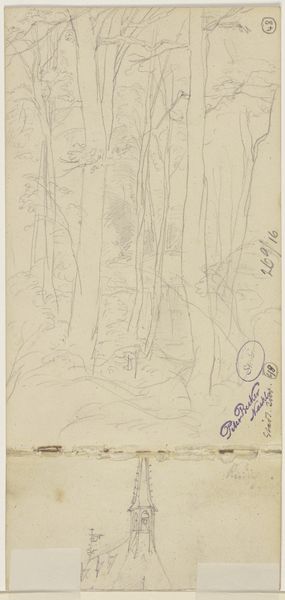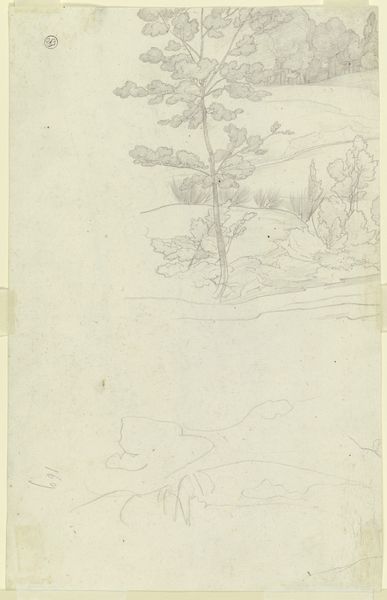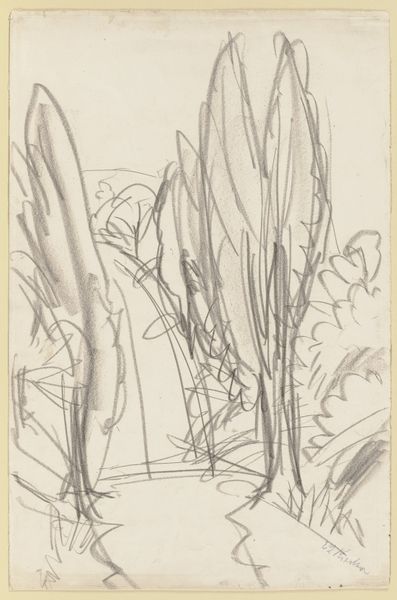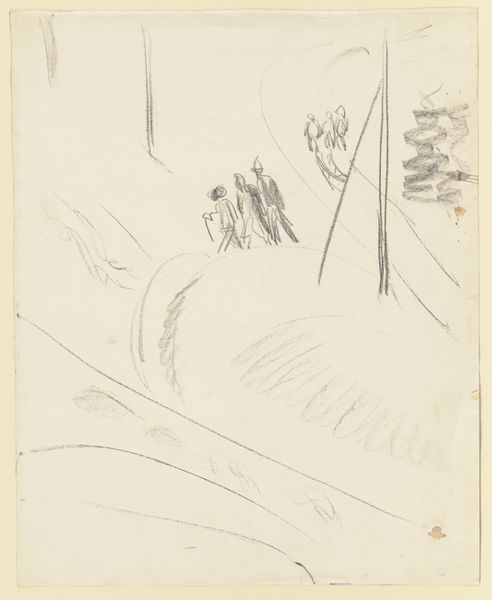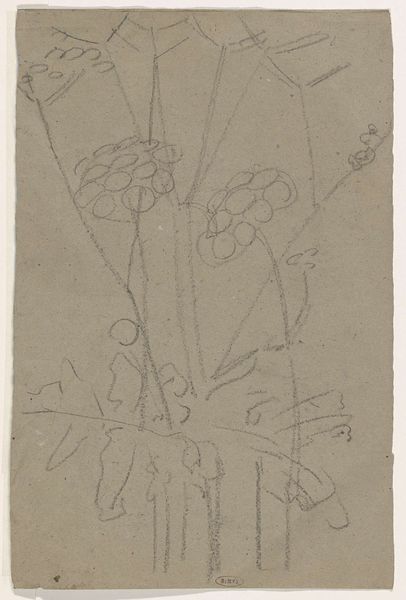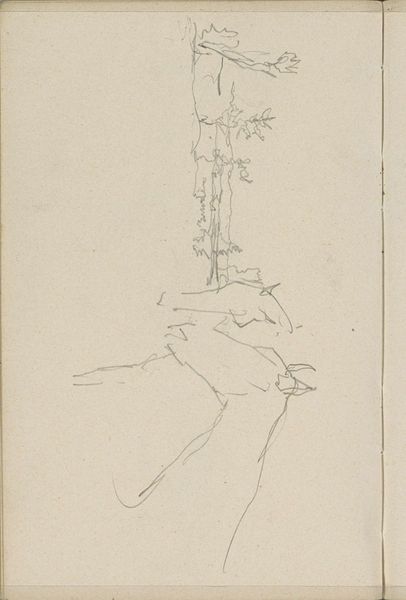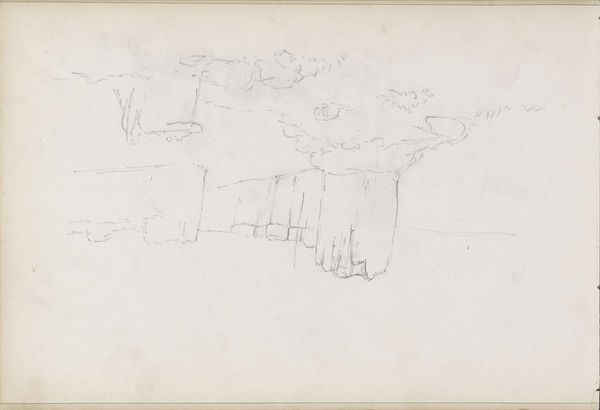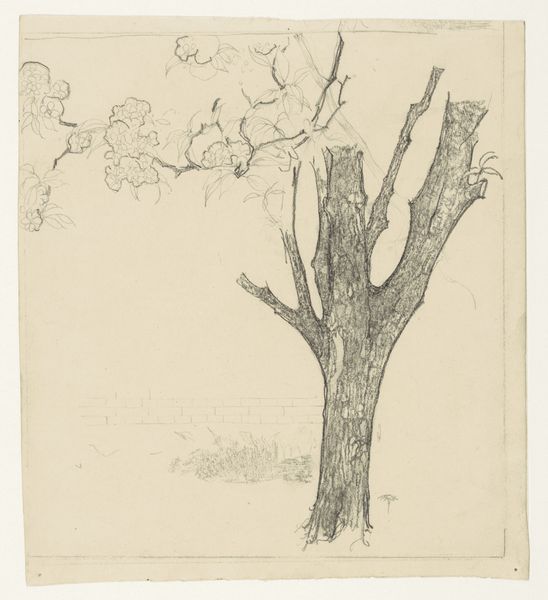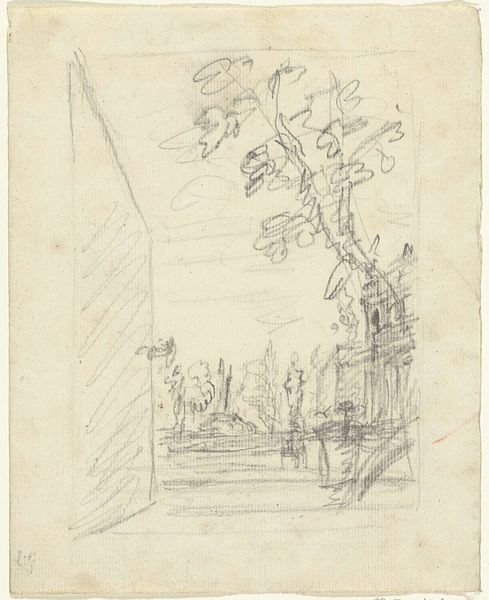
drawing, paper, pencil
#
drawing
#
landscape
#
paper
#
romanticism
#
pencil
#
line
#
naturalism
Copyright: Public Domain
Curator: This delicate pencil drawing on paper, simply titled "Trees," was created by Carl Philipp Fohr around 1816-1817 and resides here at the Städel Museum. Editor: The immediate feeling is one of transience. These faint lines barely capture the essence of the flora. It’s as if the plants themselves are fading. Curator: I'm drawn to the choice of pencil as a deliberate one. It reflects the accessibility of art production at the time. Pencils became more readily available, enabling artists, and indeed amateur drawers, to capture the world around them with ease and speed. Think about the burgeoning middle class desiring picturesque views; Fohr provided a glimpse into Romanticism for a broader audience. Editor: Yes, the medium allows the artist to capture very subtle variations. Look at the different qualities of lines. Some are almost broken, tentative, and some are slightly bolder, defining a form. Curator: Absolutely. Considering the rise of Naturalism in the arts, this almost clinical approach to capturing plant life mirrors the growing scientific interest in cataloging the natural world. Fohr is not necessarily presenting grand landscapes, but engaging with botanical precision within a broader cultural context. Editor: I agree there’s scientific observation at play, yet I am still touched by the subjective interpretation visible. There’s no depth; the forms are flat. Yet, that deliberate flattening almost abstracts them, allowing us to focus on the rhythm between the lines, the careful balance of the composition. It calls attention to the artificiality inherent in representing nature. Curator: Good point. Perhaps it shows the struggle for balance within Romanticism itself: The push and pull between an objective gaze and a deeply personal emotional experience. Editor: Yes, it all works so perfectly, from a Formalist perspective! Curator: Seeing it as evidence of accessible art practices and how those connect to larger economic and intellectual movements is interesting as well. Thanks for taking the time with me to explore it from two very different angles. Editor: My pleasure. It’s inspiring how different approaches unlock layers of significance. It underscores the beauty of art itself!
Comments
No comments
Be the first to comment and join the conversation on the ultimate creative platform.
